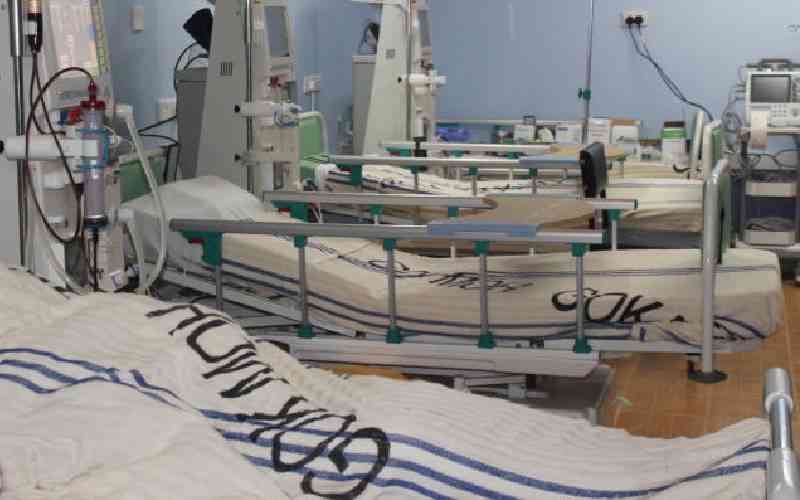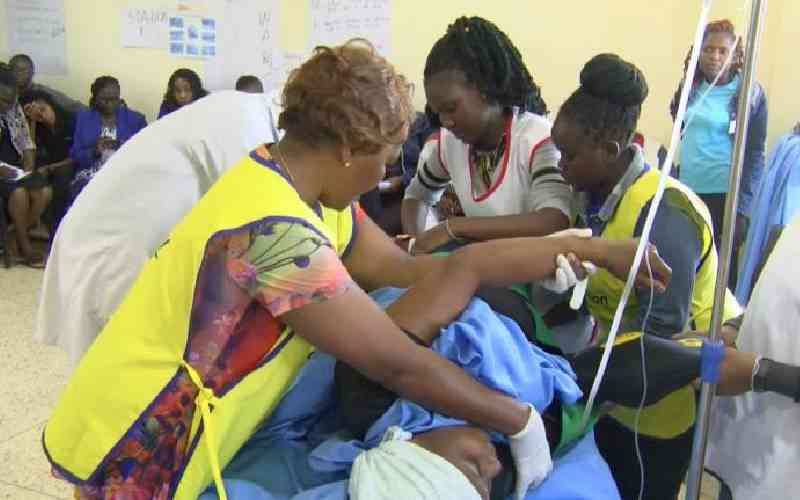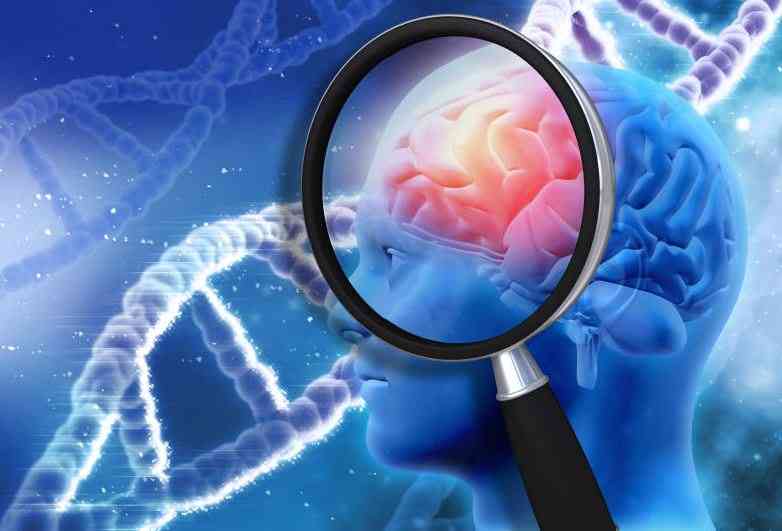
Despite recent breakthroughs that have improved survival rates, lung cancer continues to affect many people.
In Kenya, this type of cancer significantly contributes to the overall cancer burden, with approximately 1,200 new cases and over 800 deaths recorded each year.
More than 60 per cent of those affected are under 70 years old, and 70 to 80 per cent are diagnosed while the disease is already at an advanced stage, according to the National Cancer Institute of Kenya.
However, effective medical imaging can greatly enhance survival rates for lung cancer victims. However, getting the right test at the appropriate time is crucial and ensuring that a qualified radiologist interprets your images.
To explain the nuances of lung cancer imaging, Dr Solomon Mutua, a clinical oncologist at The Nairobi West Hospital dittoes the role of chest CT scans in early lung cancer detection, and why (Positron Emission Tomography (PET) scans are the most powerful tool for lung cancer staging. He emphasises the importance of seeking a second opinion to avoid diagnostic errors, since it may come with its limitations.
“While a chest x-ray can identify some lung tumours, it may miss small tumours present in the early stages of the disease and is less effective at assessing cancer spread,” says Dr Mutua.
In contrast, he says a chest CT scan provides detailed images by taking multiple pictures of the lungs and chest and compiling them into a comprehensive view.
- Moi Referral hospital and AstraZeneca launch advanced testing to improve lung cancer diagnosis
- Why lung cancer diagnoses are often delayed in the country
- Air pollution fuels lung cancer among non-smokers: study
- This simple fingernail test could help save you from lung cancer
Keep Reading
“This detailed imaging allows for the detection of tiny nodules and is especially useful for diagnosing lung cancer at its most treatable stage,” he explains.
On when should a patient get a PET scan for lung cancer evaluation, Dr Mutua says if a chest x-ray or chest CT scan reveals suspicious findings, a PET scan is the next appropriate step.
“PET uses a radioactive tracer to visualise molecular activity in the body. Typically, a PET scan is performed alongside a chest CT scan. The two scans are fused to provide combined information for more accurate interpretation,” he says.
He says PET scans are essential for lung cancer diagnoses compared to other imaging tests. According to Dr Mutua, a PET scan can detect cancer in lymph nodes and organs that appear normal on a chest CT scan.
“Since PET scans cover a larger area of the body, from the skull to the thighs, they are particularly effective at identifying metastatic disease. However, PET/CT interpretation is complex and requires expertise to avoid false positives or negatives,” he says.
He adds, “For example, the tracer used in PET can help an interpreting radiologist distinguish between benign (non-cancerous) and malignant (cancerous) masses. This is of course extremely valuable. But – if the radiologist does not have adequate training and extensive experience diagnosing lung cancer, there’s an increased risk for misdiagnosis. Ensuring your PET and CT chest scans are interpreted by a radiology sub-specialist can help prevent errors,” adds Dr Mutua.
That is not all, he says PET scan plays a role in lung cancer staging since it detects changes in glucose metabolism, which is crucial for accurate staging.
He recommends a PET scan as an imaging test to help determine if lung cancer treatment is effective. This, he says, is because by detecting minute changes in glucose metabolism, a PET scan can pick up on positive treatment effects even before the tumour starts to shrink.
By detecting increased tumour metabolism or tumour sites that are not visible via CT, he says, a PET scan can also let us know when a tumour is not responding to treatment sooner.
“In such scenarios, doctors can quickly change the treatment as needed,” he says.
With the advancement of lung cancer treatment, Dr Mutua says many more options are available to patients now than a decade ago.
“And, thankfully, doctors can even monitor the success of medication with PET/CT scans. But again, interpretation can be challenging, requiring a very specialised set of skills. An expert second opinion can make a big difference for patients,” he says. In interpreting a PET Scan – Lung Cancer Accuracy, he says some challenges in accurately diagnosing the disease exist.
He advises patients navigating lung cancer screening or a lung cancer diagnosis to have the images reviewed by a subspecialty radiologist given the complexity of interpreting chest CT and PET scans.
He adds: “Seeking a second opinion ensures the most accurate information and optimal care.”
 The Standard Group Plc is a multi-media organization with investments in media platforms spanning newspaper print
operations, television, radio broadcasting, digital and online services. The Standard Group is recognized as a
leading multi-media house in Kenya with a key influence in matters of national and international interest.
The Standard Group Plc is a multi-media organization with investments in media platforms spanning newspaper print
operations, television, radio broadcasting, digital and online services. The Standard Group is recognized as a
leading multi-media house in Kenya with a key influence in matters of national and international interest.











